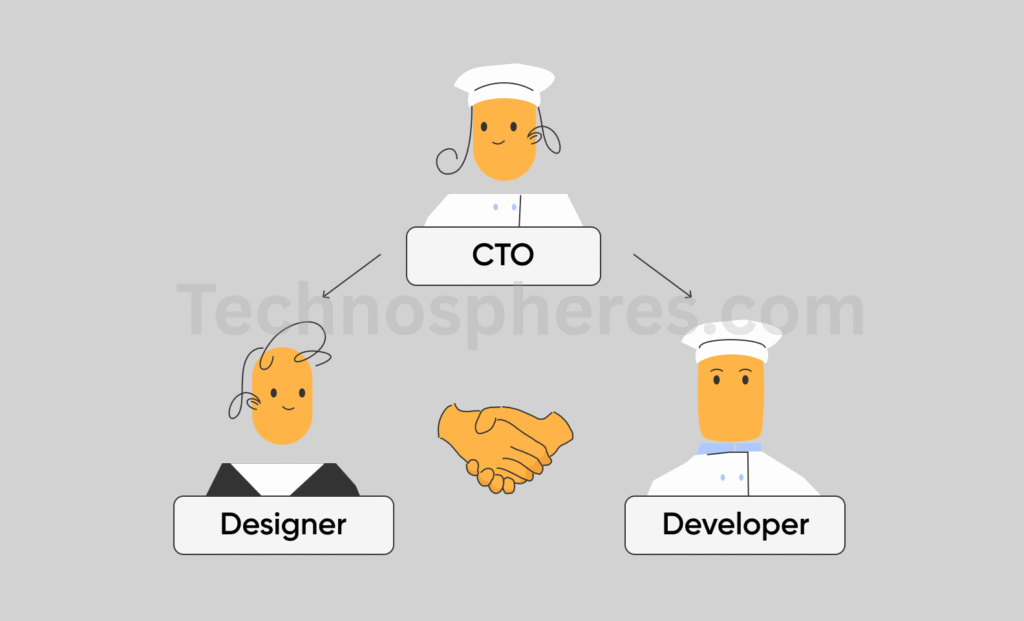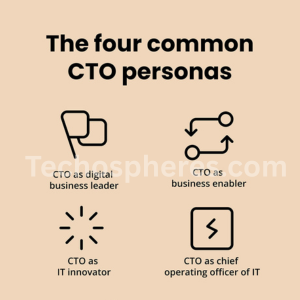
communication tasking order
A formal directive specifying the communication needs, priorities, and methods to be followed for civil and military activities is known as a Communications Tasking Order (CTO). Modern military and civilian operations depend on good communication to coordinate activities, maintain safety, and meet operational aims. Managing and directing communication assets depends much on the Communications Tasking Order (CTO), which helps to guarantee constant information flow among varying units. Emphasizing its value in both military and civilian spheres, this article looks at the scope, importance, and role of the CTO.
Communications Tasking Order (CTO) general overview
- To guarantee that all communication systems and assets run in a coordinated way, it is issued by a central authority including a military command or government department.
- Regarding frequency assignments, communication standards, encryption technologies, equipment use, and operational schedules, the CTO offers explicit direction. It guarantees that radio, satellite, and digital networks work without interference or compromise by directing documents for units and employees in charge of communication.
- CTOs assist in military environments commanders prudently distribute resources, keep safe lines of communication, and react to changing operational circumstances. Regarding civil activities including disaster response or great public gatherings, CTOs assist with interagency coordination of emergency communication systems.
Communications Tasking Order (CTO)
Military operations
For mission success, force protection, and situational awareness, dependable communication is absolutely essential in military settings. CTOs see to it that communication networks are flexible, fast, and secure enough for different operational demands. Including in military operations, CTOs should be done:
- Operational coordination means reducing delays and errors by guaranteeing every department has real time communication access.
- Protecting secure frequencies and encryption standards sensitive data from enemies.
- Resource Optimization: Proper distribution of communications resources avoids interference or frequency congestion.
- Interoperability: Facilitating seamless communication across various military branches and allied forces.
Civil activities
Civil and urgent response, law enforcement, and extensive public coordination depend equally on CTOs. Some significant points comprise:
- Disaster Response: Assuring that first responders, medical teams, and relief organizations can effectively link during emergency events.
- Public Safety and Law Enforcement: Communication coordination among emergency medical services, fire departments, and police forces throughout major events.
- Major Events: Coordinating communication for political rallies, sporting events, or national celebrations to guarantee public safety.
- Standardizing communication protocols helps chief technical officers increase efficiency, security, and dependability in civil as well as military operations.
The intent and extent of the document
Intent
This piece aims first and foremost to give a full knowledge of Communications Tasking Orders (CTOs)—how they operate, their significance, and their uses. This piece hopes to underline how the CTO operates across several operational contexts affects mission success, security, and good communication.
Range
The piece goes over CTOs from several points of view, among them:
Their essence, organization, and main features.
CTOs contribute to both civilian and military activities.
How chief technical officers help secure communication and manage resources effectively.
Some best strategies and difficulties tied to implementation.
Knowledge of community tasking orders
Essential instructions governing the planning, distribution, and implementation of communication resources in military and civilian missions, Communications Tasking Orders (CTOs). These provide a organized plan for guaranteeing smooth and safe contact among several departments, organizations, and operational settings. Understanding CTOs demands a more thorough examination of their definition, parts, and differences from other operational orders such as OPORD and FRAGO.
Definition and responsibilities of a CTO
- A Communications Tasking Order (CTO) is how something deep in military or technical jargon is often unfortunately referred to.
- An official directive given by a command authority, a Communication Tasking Order (CTO) offers precise instructions on communication systems, frequency allocations, encryption protocols, network setups, and operational communication plans. It verifies that all elements participating in an operation have a coordinated, secure, and free of interference communications environment.
- CTOs are usually given for military assignments, emergency response situations, and other major coordinated projects for which explicit and dependable communication is vital most. These instructions make sure communication tools are assigned properly and every related staff member adheres to standard operating guidelines.
Role of a CTO’s Operational Department
- A CTO’s main responsibility is to guarantee operational efficiency, security, and interoperability on communication networks.
- Standardizing Communication Protocols: These would provide precise standards for digital, satellite, and radio communication to help avoid errors and conflicts.
- Enhancing security would mean setting out encryption and authentication standards to stop unauthorized access or signal interception.
- Optimizing frequency management assigns particular frequencies to separated units to avoid overwhelm and guarantee smooth communication flow.
- Coordinating Interagency Organizing: In civil works, CTOs assist to coordinate messaging between government departments, first responders, and other interested parties.
- Ensuring Mission Continuity: Gives alternate frequencies and backup systems as well as contingency plans for communication failures.
- CTOs are vital in supporting civil and military activities by guaranteeing clarity, protection, and coordination; they also help to preserve a organized and dependable communication network.
Major components of a CTO
Summary of missions
Several key elements of a Communications Tasking Order (CTO) give thorough directions for communication planning and execution. The most crucial parts are:
Specifies the mission or operation that needs organized communication, outlines the general goal of the CTO.
Sets the roles of various teams as well as the communication priorities.

Communication resources distribution
- Gives the digital networks, satellite channels, and radio frequencies allocated for various units.
- Verifies that every communication medium is efficiently and unobstructed.
Rules on encryption and security.
- Apart of protecting sensitive data is knowledge of encryption policies and cryptographic methods.
- Offers guidance on important key control, verification techniques, and counter measures broadcasts against electronic warfare threats.
Network and frequency management.
- Lists restrictions, accepted frequencies, and bandwidth allotments meant to help to circumvent signal overload.
- Where relevant, it deals with interoperability with allied units or civil agencies.
Communication methods and standards
- Outlines standard operating procedures (SOPs) for transmitting information.
- Includes predefined message styles, authentication codes, and call signs.
Plans for contingency and alternatives
- Defines in case of machine malfunction, hacking, or jamming other communication channels.
- Establishes backup encryption keys, emergency frequencies, and rerouting processes systematically.
Reporting and Conformity Requirements
- Creates a mechanism for reporting communication violations or problems.
- This keeps compliance with regulations and operational security (OPSEC) rules.
All of these elements guarantee that messages in a operation is flexible, secure, and effective.
Contrast CTO, OPORD, and FRAGO
Although crucial military orders, CTO, OPORD (Operations Order), and FRAGO (Fragmentary Order) have different applications. Here is a thorough side by side analysis:
| Aspect | Communications Tasking Order (CTO) | Operations Order (OPORD) | Fragmentary Order (FRAGO) |
| Purpose | Directs communication procedures, frequency management, and encryption protocols. | Outlines the full scope of an operation, including objectives, logistics, and tactics. | Provides modifications or updates to an existing OPORD based on new developments. |
| Scope | Focuses exclusively on communication assets and procedures. | Covers all aspects of an operation (maneuver, intelligence, logistics, communication, etc.). | Addresses specific changes to an existing OPORD without rewriting the full order. |
| Issued By | Communications command authority or signal unit. | Higher command or operational leadership. | Any relevant command authority issuing an update to an OPORD. |
| Content Focus | Frequency assignments, network security, radio procedures, backup plans. | Mission objectives, execution plans, resource allocations, rules of engagement. | Adjustments to mission execution, resource deployment, or updated intelligence. |
| Update Frequency | Can be updated periodically based on communication needs and security threats. | Issued before an operation begins and remains valid unless modified. | Issued as needed when conditions change |
| Example Use Case | Assigning radio frequencies and encryption keys for a joint military exercise. | Deploying a battalion for a peacekeeping mission with full logistics and strategic planning. | Changing a unit’s route due to new intelligence during an ongoing operation. |
Orders of communication tasking
CTOs might be classified according on their length, intent, and operational context. Knowing these various kinds helps to simplify how CTOs operate in different circumstances, military or civilian. The primary categories are Standing vs. Dynamic leaders of technology, tactical vs. Strategic chief technology officers and Military against. Nonmilitary CTOs.
Standing CTO vs Dynamic Chief Technology Officer
Standing Communications Tasking Order (CTO)
Established over an extended time, a standing CTO defines regular communication processes, frequency allocations, and security measures. These directions stay in effect permanently or until a significant shift calls for a revision.
Properties of a standing CTO:
- Offers coherent instructions for communication operations.
- Helps the communication networks to be consistent and predict overall.
- Common in civil activities, permanent installations, or ordinary military operations conducted outside of war.
- Permanent frequency assignments, encryption norms, and interoperation rules may be included.
Examples of applications:
- U.S. military’s worldwide communication network with standard frequencies and security protocols for allied forces.
- A national emergency response communication plan that guarantees police, fire, and medical services work together.
- Aviation and maritime communication standards employed globally.
Dynamic Chief technology officer
A Dynamic CTO is a brief, mission specific direction given to adjust to emerging operational circumstances. Generated in reaction to certain hazards, goals, or circumstances, these directives can vary regularly.
Attributes of a dynamic CTO:
- Flexible and adaptable—can be changed based on real time intelligence and mission demands.
- Sometimes seen in disaster relief operations, emergency response situations, or military zones.
- Based on present happenings, assigns temporary frequency changes, more encryption levels, or new communication techniques.
Examples of applications:
- A battlefield CTO functions to change daily the encryption keys so as to stop enemy interception.
- A hurricane reaction CTO which modifies communication resources depending on infrastructure damage.
- CTOs of cybersecurity response who change encryption or access controls following a cyber incident.
Key Differences Between Standing and Dynamic CTOs
| Aspect | Standing CTO | Dynamic CTO |
| Duration | Long-term (weeks, months, or years) | Short-term (hours, days, or weeks) |
| Flexibility | Fixed protocols, rarely changes | Frequently updated based on mission needs |
| Purpose | Standardization and routine operations | Adapting to changing operational conditions |
| Example | Military base communication plan | Battlefield frequency reassignment |
Strategic vs Tactical CTOs
Operational Chief Technology Officer
A Tactical CTO is meant for small scale, current tasks at the mission or unit level. During live operations, it emphasizes battlefield communications, real time coordination, and secure information flow.
Attributes of a Strategic Chief Technology Officer:
- Common use in the short term, often depending on the mission.
- Utilized for ground forces, special operations, and emergency response teams.
- Guarantees good, safe communication for emergency or warfare missions.
- Covers radio signals, signal encryption, electronic warfare countermeasures, and backup communication plans.
Examples of Use Cases:
- Assign secure communication channels for a special forces raid.
- Creating radio networks for a police SWAT team during a hostage rescue.
- During a military assault, drone communications in real time guided.
Strategic chief technology officer
A Strategic CTO is employed for long term, high level editing having impact on national security, whole regions or companies. Its main concerns are policies, infrastructure improvement, and general communication plans.
Qualities of a strategic CTO:
- Helps long term plan of communications strategy and planning.
- Includes international partnerships, government departments, and more senior command levels.
- Ensuring interoperability among several branches, allied forces, or international agencies.
- Includes satellite communication management, internet security policies, and international frequency coordination.
Examples of Use Cases:
- Creating NATO wide communication plan for merged military operations.
- A federal directive for communication on cybersecurity should be put into place.
- Establishing long term communication guidelines for disaster preparedness and response.
Key Differences Between Tactical and Strategic CTOs
| Aspect | Tactical CTO | Strategic CTO |
| Focus | Mission-specific, immediate needs | Long-term planning, high-level coordination |
| Users | Field units, front-line personnel | High command, national agencies |
| Scope | Localized (battlefield, disaster site) | Regional, national, or multinational |
| Example | Special forces mission CTO | NATO-wide communication policy |
Armed forces as against nonmilitary CTO
Armed forces corporate technologies officer.
Secure, dependable, mission essential military communications inside armed operations are guaranteed by a Military CTO. Maintain national security and battlefield superiority by means of radio, satellite, cyber, and electronic warfare considerations.
- Very secure—contains jamming, verification, and encryption features.
- Found on military logistics, intelligence, and fighting operations.
- Classification helps to keep enemy interception from happening.
- Frequently meshed with joint operations, allied forces, and cyber warfare protocols.

Examples of application cases:
- Radio frequency allocations for a military convoy in a combat zone.
- Handling satellite communication for remote army outposts.
- Using electronic warfare techniques to block opponent signals.
Nonmilitary CTO
Intended for public safety, disaster recovery, and broadscale coordination among first responders, businesses, and government departments, a Civilian CTO is built.
Traits of a nonmilitary CTO:
- Used by emergency management departments, hospitals, fire services, and law enforcement, among others.
- Frequently emphasizes big events, disaster reaction, and public safety.
- Uses open communication systems with encryption on sensitive information.
- By equilibrium of efficiency, safety, and access, communication across many companies is guaranteed.
Example Cases of Use:
- A national disaster communication strategy covering terrorist threats, earthquakes, or hurricanes.
- Organizing radio networks for major public events such the Olympics.
- Providing secure communication channels for safeguarding of critical infrastructure (transportation, power grids).
Key Differences Between Military and Civilian CTOs
| Aspect | Military CTO | Civilian CTO |
| Purpose | Combat, defense, intelligence | Public safety, emergency response, infrastructure |
| Security Level | High (encrypted, classified) | Medium (some encryption, mostly open networks) |
| Users | Armed forces, intelligence agencies | Police, fire, hospitals, government agencies |
| Technology | Secure military-grade equipment | Public and private sector communication systems |
| Example | Battlefield communication plan | Disaster response radio network |
Role of CTO in Military Operations
Mission Command Systems Integration
By guaranteeing smooth integration with mission command systems, a Communications Tasking Order (CTO) is vital for military operations. Realtime decision making, field coordination, and operational planning are all helped by these systems. Good organization of a CTO guarantees that communication policies match commanded control systems and thus allow for smooth data transfer from headquarters to field units. This incorporation improves operational efficiency, fast reaction speed, and situational awareness.
Consequent Secure, trustworthy Communications
To stop adversary interception, jamming, or cyber threats, military activities need very secure and strong communication paths. For dependable communication, a chief technology officer specifies redundancy systems, authentication protocols, frequency allocations, encryption standards, and frequency allocations. It too ensures that under all circumstances command structures stay operational by including contingency plans for communication interruptions including electronic warfare attacks or satellite failures.
Examples of CTO Application in Military Operations.
- Operation Desert Storm (1991): The US. military employed CTOs to organize multibranch correspondence between naval, air, and ground forces to guarantee simultaneous assaults and reduce friendly fire events.
- Iraq and Afghanistan conflicts: Setting up safe networks for joint US operations depended on CTOs. and among coalition forces, guarantying that several communication systems interact without any hitches.
- Ukraine Conflict (2022Present): CTOs have played a significant role in coordinating secure battlefield communications, countering cyber threats, and integrating real time intelligence with combat operations.
Civil and Emergency Response Operations CTO
Use in Disaster Response and Crisis Management.
CTOs create clear communication lines for government departments, relief organizations, and first responders during disasters such as hurricanes, quakes, and epidemics. To guarantee that vital data gets to the right entities without delay, they establish backup systems, emergency contact lists, radio frequencies, and communications protocols. CTOs help coordinate public real time updates, resource distribution, and evacuation plans.

Government and independent businesses need to be coordinated.
Efficient emergency reaction typically entails cooperation among private firms (logistics companies, telecom providers, NGOs) as well as government agencies (FEMA, National Guard, public health departments). CTOs help to provide a structure for linking communications capacities across several industries, therefore guaranteeing data sharing, operations, and effective command execution. Logistics firms manage supply chain movements according on CTO instructions, while private telecoms could be responsible to recover cell networks.
Real World CTO Implementations Insights
- Hurricane Katrina (2005): Communication breaks stalled disaster response. Coordination breakdown between state and federal authorities was aided by the absence of a consistent CTO structure.
- The COVID19 pandemic from 20202022 saw CTOs assist in managing the spread of public health knowledge, medical resource coordination, and cyber security for remote communication systems.
- California Wildfires: CTOs have been used to direct emergency alerts, coordinate evacuation plans, and maintain reliable communication among firefighters, law enforcement, and relief organizations.
CTO Technology and Innovations
Effects of Up and coming Technology (AI, Cloud, Automation)
- Development and delivery of Communication Tasking Orders (CTOs) is being transformed by emerging technologies.
- Using artificial intelligence technologies helps to automate task distribution, predict communication interruptions, and analyze huge data sets, therefore improving decision making. AI also aids with voice recognition for global activities and real time language translation.
- For communication directions, cloud based CTO systems offer scalable and safe storage, therefore allowing real time access and changes from any point. In military and disaster reaction situations, this helps to coordinate things more.
- Automated systems simplify CTO distribution, monitoring of compliance, and alert generation, thus reducing manual work and increasing efficiency. Automation helps for fast rollout of communication changes in changing settings too.
Considerations of cybersecurity in CTO growth
Cybersecurity is especially important in view of the sensitive character of CTOs. Fundamental factors are:
- End to end encryption has to be imposed by CTO to stop data leaks and unauthorized files intrusion.
- Role based access and multifactor authentication guarantee that only authorized personnel can change or view CTOs.
- Threat detection and mitigation: AI powered cybersecurity systems will pick up insider threats, possible breaches, and anomalies live.
- Resilience to cyber threats: CTO structures have to have contingency plans for cyber events, including backup communication systems and fast response plans to counter cyber risks.
Future Directions for Communication Defining
- Faster, low latency communication in 5G and next generation networks will boost real time data sharing in CTO operations.
- Regarding security, quantum encryption will deliver unassailable protection for CTO data transfer.
- Decentralized Communications Systems: By improving openness, security, and accountability in job requests, block chain based CTOs might help.
- Augit Reality (AR) and Virtual Reality (VR): Integration of AR/VR will enhance situation awareness, instruction, and live mission performance.
Typical problems and effective methods
Traps in the development of CTO
- Lack of Definiteness: Unclear directions might cause mistakes in performance.
- Bad stakeholder coordination results in contradicting goals and waste if key players are not included.
- CTOs should promptly contact all pertinent staff members; delays could jeopardize operations.
- Weak compliance monitoring without good tracking lets variations from the CTO slip unnoticed, therefore causing operational failures.
- Weak security policies may expose CTOs to data breaches and hacking.
Techniques for Communications Tasking Order (CTO) Management
- Standardize Templates: Use preset styles to guarantee coherence and preciseness.
- Provide thorough training on execution, development, and security policies for CTO as well as on personnel.
- Automated Tracking Systems: Use artificial intelligence powered software to check for compliance and spot bottlenecks.
- Promote constant coordination among military, public, and corporate units by means of cross agency cooperation.
- Ensure CTO models stay useful and current by regular reviews and testing of them.
Recapitulation of Main Points
In organizing and guiding communication initiatives throughout military, disaster response, and corporate activities, Communications Tasking Orders (CTOs) are very important. Key messages consist in:
- CTOs appreciate clear, organized, and safe communication throughout a variety of operating environments.
- Effective CTO development calls for meticulous planning, coordination, and engagement of stakeholders so as to correspond with stated goals.
- Transforming CTO management and enhancing efficiency and security are developing technologies like AI, cloud computing, and automation.
- Given that CTO frameworks require strong encryption, access control, and threat mitigation techniques, cyber security is of utmost importance.
- Regular updates, automation, and standardized templates are best practices used to help companies overcome common obstacles like miscommunication, low compliance monitoring, and cybersecurity threats.
The Changing Modern Communications Tasking Order (CTO) Role
The responsibilities of CTOs grow above and beyond typical military and emergency response uses as communication technologies get better.
- CTOs in the military sector are using quantum secured communications, AI powered analytics, and real time battlefield networks to improve operational performance.
- CTOs are coordinating disaster relief efforts, running public information systems, and unifying cross sector interaction solutions for effective crisis management in civil and emergency response as well as in military response.
- The increasing of cyber threats calls for more robust CTO structures that guarantee continuous, secure, and flexible communication in the presence of cyber attacks or system hiccups.
Concluding Remarks and Prospects Going Forward
Advance in AI driven automation, blockchain security, 5Genabled connectivity, and cloud based collaborative tools will help to define the future of Communications Tasking Order (CTO). CTOs will have to adapt to meet fresh difficulties including greater cyber warfare threats, data privacy concerns, and the complexity of worldwide communication networks as communication becomes more decentralized and dependent on digital infrastructure. Constantly adjusting their CTO techniques, businesses must balance creativity with conformity, security, and performance in their communication policies.
Read more about Cyber Security from Technospheres.


